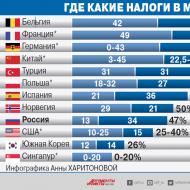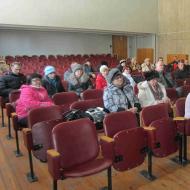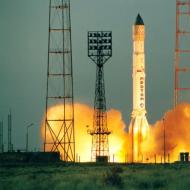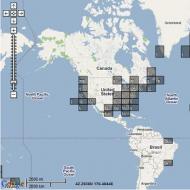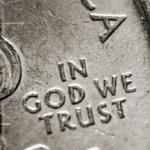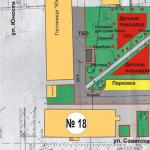
Elements of the monetary system. Monetary system of the Russian Federation Procedure for securing banknotes
The procedure for securing banknotes.
State legislation establishes that commodity-material values, gold and precious metals, freely convertible currency, securities, insurance policies, guarantees of the Government, banks and other organizations, etc. The use of other types of collateral or violation of the basic rules for processing collateral by banks should not be allowed.
Emission mechanism.
It represents the procedure for the release of money into circulation and their withdrawal from circulation. Issuing money into circulation is combined with its withdrawal from circulation on a daily basis. Therefore, emission is understood as such an issue of money, which leads to a general increase in the money supply in circulation.
Non-cash money is issued by commercial banks in the course of their lending operations. When repaying loans, money is withdrawn from circulation. Cash is issued through the central bank's cash settlement centers. Withdrawal of cash occurs when commercial banks donate cash to settlement and cash centers.
The structure of the money supply in circulation.
It is considered in two ways. This is either the ratio between cash and non-cash money supply, or the ratio between banknotes of different denominations in the entire volume of the money supply. Money turnover is the process of movement (circulation) of money in cash and non-cash forms, during which money performs the functions of circulation and payment. Basically, money is constantly not in a static state, but in motion. Thus, money circulation is a form of existence of money and is an element of the monetary system.
The modern monetary system of Russia, like most other countries, is based on money that cannot be exchanged for gold. The main provisions of the monetary system Russian Federation are defined in the Federal Law of July 10, 2002 No. 86-FZ "On the Central Bank of the Russian Federation (Bank of Russia)" (as amended on January 10, 2003).
The name of the monetary unit. According to this Law the official monetary unit (national currency) of the Russian Federation is the ruble, which is equal to 100 kopecks. In Russia, in the period from 1922 to 1947, there were two names for the monetary unit: "ruble" and "chervonets". After . and up to the present time in Russia there has been a single name for the monetary unit - "ruble", which was enshrined in the Law "On the Monetary System of the Russian Federation" adopted by the country's parliament and in the subsequent Law "On the Central Bank of the Russian Federation".
The law prohibits the issue of other monetary units and monetary surrogates, emphasizes the responsibility of persons who violate the unity of monetary circulation. There is no official relationship between the ruble and gold or other precious metals. The exclusive right to issue cash, organize circulation and withdraw it from circulation on the territory of the Russian Federation belongs to the Central Bank of the Russian Federation.
The types of money that have legal payment force are bank notes () and metal coins, the samples of which are approved by the Bank of Russia. Banknotes and metal coins are unconditional obligations of the Central Bank and are secured by its assets. They are obligatory to be accepted at their face value throughout the territory of the Russian Federation for all types of payments, as well as for crediting to accounts, deposits, deposits and for transfers.
The law divided the powers of the Government of the Russian Federation and the Central Bank of the Russian Federation in the field of manufacturing banknotes. The Central Bank of the Russian Federation is only responsible for planning the volumes of their production.
In order to organize cash circulation, the following functions are assigned to it:
- forecasting and organizing the production of banknotes and metal coins;
- creation of reserve funds for banknotes and coins;
- determination of the rules for storage, transportation and collection of cash;
- establishment of signs of payment of banknotes and the procedure for replacing and destroying banknotes;
- approval of rules of conduct cash transactions for credit institutions.
In 2002, the Bank of Russia put into effect the Regulation “On the Procedure for Conducting Cash Transactions in Credit Institutions on the Territory of the Russian Federation” No. 119-P dated October 9, 2002 (as amended on June 1, 2004).
The procedure for securing banknotes. State legislation (federal laws "On the Central Bank of the Russian Federation", "On banks and banking») It is established that it can serve as security for banknotes (commodity and material values, gold and precious metals, freely convertible currency, securities, insurance policies, guarantees of the Government of the Russian Federation, banks and other organizations, etc.). The use of other types of collateral or violation of the basic rules of collateral should not be allowed.
Emission mechanism represents the procedure for the release of money into circulation and their withdrawal from circulation. Non-cash money is issued by commercial banks in the course of their lending operations. When loans are repaid, money is withdrawn from circulation. Cash is issued by the cash settlement centers of the Central Bank of the Russian Federation. Withdrawal of cash occurs when commercial banks donate cash to settlement and cash centers.
The structure of the money supply in circulation is considered in two ways. This is either the ratio between cash and non-cash money supply, or the ratio between banknotes of different denominations in the entire volume of the money supply.
Forecast planning procedure money turnover includes a system of forecast plans for money turnover; the bodies making these plans; a set of indicators determined using these plans; tasks solved by each plan.
Monetary regulation mechanism is a set of instruments of monetary regulation (methods); rights and obligations of bodies exercising monetary regulation; tasks and objects of monetary regulation.
Establishment procedure exchange rate, or quotation of currencies, represents the ratio of the currency of a given country to the value of currencies of other countries, for example, $ 1 = 36.7 rubles. Before perestroika, the procedure for establishing the exchange rate was used in Russia, proceeding from the gold content of various currencies. However, since the gold content of the monetary unit is not currently recorded in one country, a quotation method is used that takes into account fluctuations purchasing power national currencies, as well as the demand and supply of a particular currency in the foreign exchange markets. The most popular quotation method is based on a “basket of currencies”, in which the national currency is compared with a number of other national currencies included in the “basket”.
The order of cash discipline in the economy reflects the set general rules, forms of primary cash documents, reporting forms that should be guided by enterprises and organizations of all forms of ownership when organizing cash flow passing through their cash desks. Monitoring compliance with this procedure is entrusted to commercial banks implementing cash service farms.
Modern monetary systems are not static. They continue to evolve to become more economical and efficient. The general trend for the monetary systems of different countries is the expansion of the use of modern computer electronics in the organization of monetary circulation. More and more widely used "", which are not records on paper media, but records in the form of electronic signals, primarily on magnetic or other media. This makes it possible to significantly increase the share of non-cash turnover in the total money turnover, speed up settlements, ensure better control of banks and tax authorities over money turnover, and achieve significant savings in circulation costs.
Modern monetary system of the Russian Federation
Monetary system The Russian Federation is based on money that cannot be exchanged for gold, i.e. has a paper-credit character. Legal basis monetary system of Russia - Federal Law of July 10, 2002 No. 86-FZ "On the Central Bank of the Russian Federation (Bank of Russia)". The official currency is the ruble divided into 100 kopecks. The monopoly right to issue and withdraw cash from circulation belongs to the Bank of Russia. In the field of organizing monetary circulation, the Central Bank of the Russian Federation performs a number of important functions:
- predicts and organizes the production, transportation and storage of banknotes and coins, creates reserve funds banknotes and coins;
- establishes the rules for storage, transportation and collection of cash;
- determines the rules for conducting cash transactions (cash transactions) for credit institutions;
- establishes signs of solvency of banknotes and coins, the procedure for their destruction, as well as replacement of damaged banknotes and coins with valid ones.
There are currently two types of banknotes in the channels of cash circulation, which are an unconditional obligation of the Bank of Russia and are required to be accepted in all types of settlements and payments - banknotes (bank notes) and coins. Currently in circulation there are banknotes in denominations of 10, 50, 100, 500, 1000 and 5000 rubles. and coins in denominations of 1, 2, 5, 10 rubles., 1, 5, 10, 50 kopecks.
Make banknotes at the enterprises of Goznak. The Central Bank of the Russian Federation designs banknotes: each banknote has a unique design theme and predominant color, and the entire series of banknotes of the same issue contains common design elements. The first stage in the creation of banknotes is the execution of a large-scale drawing using computer technology; then a metal engraving is performed, which is converted into a metal cliche with a pattern repeated many times in real scale. Banknotes are printed from the cliché. In the production of banknotes, three types of printing are consistently used: offset, deep (intaglio) and high (typographic).
Modern banknotes have a set of security measures that make it difficult to counterfeit. For example, a 5000 ruble banknote issued in 2006 contains security elements (Table 3.1).
Table 3.1. Signs of solvency of a banknote with denomination of 5,000 rubles.
|
Protection elements |
Characteristic |
|
Color Variable Paint |
The coat of arms of the city of Khabarovsk is made with color-variable paint. When the slope of the banknote is changed, the color of the coat of arms changes from crimson to golden green |
|
Water marks |
The paper of the banknote is white and does not glow in ultraviolet light. On the coupon fields of the banknote, there are two local watermarks: on the narrow coupon field in the gleam one can see the vertically located number 5000. made with light shaded figures; on a wide coupon field there is a half-tone image of the head of the monument to N.N.Muravyov-Amursky. When viewed through the watermarks, areas are visible both darker and lighter in comparison with the general background of the paper. On the watermark located on a wide coupon field, smooth transitions of tones from dark to light are clearly visible |
|
rainbow |
On the front side there is a field that is perceived to be solid if you hold the banknote perpendicular to the direction of view at a distance of 30-50 cm from the eyes. When the banknote is tilted, multicolored stripes appear on this field. |
|
Enlarged relief |
The text "Ticket of the Bank of Russia" and the label for visually impaired people have increased relief, perceived by touch |
|
Kipp effect |
The latent image (kipp effect) located on the ornamental ribbon is revealed when the banknote is viewed at an acute angle in reflected light |
|
Bank of Russia emblem |
The emblem of the Bank of Russia in the upper left part of the front side of the banknote is covered with a shiny varnish that changes color. When viewing banknotes from different angles central part the emblem changes its color from golden brown to dark blue |
|
Graphic elements |
Image of the far bank of the river. Cupid in the center of the front side of the banknote is formed of small graphic elements visible through a magnifying glass: the abbreviation "CBRF", silhouettes of tigers, bears, fish. trees |
|
Microtext |
Microtext in the form of a repeating number 5000 is made on the front side in the upper right part of the banknote. When viewed with the naked eye, it looks like a repeating number 5000 with an apparent relief. In the upper part of the reverse side, lines of microtext are printed, formed from the repeated dark number 5000 in an oblique style. In the lower part of the reverse side, lines of microtext are made, consisting of the multiply repeating text CBRF5000 in direct style, which has a smooth transition from negative letters and numbers on the left to positive ones on the right. Negative microtext formed by the repeating abbreviation CBRF. executed on elements in the middle of the vertical ornamental strip on the right side of the reverse side of the banknote |
|
Microperforation |
When looking at the banknote against the light source, the number 5000, formed by micro-holes, is visible on it. which look like bright dots. This sign is clearly visible even with a low-power light source. The paper at the location of the micro-holes should not be perceived as rough to the touch |
|
Security thread |
A diving security thread 3 mm wide is inserted into the paper. The security thread has 5 outlets on the reverse side of the banknote and 8 in reflected light has the form of rectangles with a pearlescent sheen. When viewing a banknote in light, the security thread looks like a dark strip with smooth edges and a repeating light number 5000 in forward, inverted and mirror images |
|
Protective fibers |
Red, light green are randomly arranged in the paper of banknotes. bicolor and gray security fibers that look purple, but when viewed through a magnifying glass, they show an alternation of red and blue areas |
|
Microtext on colored background |
In the lower part of the obverse, above the ornamental ribbon with a kipp-effect. the microtext is located in the form of a repeating number 5000 in brown on a light brown background. Text and background printed intaglio in one step |
The circulating banknotes of the 1997 model and the modified banknotes of the 2004 model contain a plot, which is a “city series” - each banknote is dedicated to a specific city of Russia.
Coins in denominations of 1 and 5 kopecks. are made of white bimetal cupronickel - steel - cupronickel. Coins in denominations of 10 and 50 kopecks. are made of yellow copper-zinc alloy. Coins in denominations of 1 and 2 rubles. made of white copper-nickel alloy. Coin in denomination of 5 rubles. made of white bimetal cupronickel - copper - cupronickel. A unique two-color coin with a face value of 10 rubles. (fig. 3.22). It contains a nickel silver disc and a brass ring. When making a coin, the ring with a disc is first assembled, then the inscription is applied, and only then the final minting takes place. Four degrees of protection were used for the first time:
- combination of yellow and white metal. The relief pattern passes from the yellow ring to the white core;
- reefs - lines on the side of the coin;
- the inscription that goes along the reefs: "ten rubles";
- latent image - two inscriptions are "hidden" at zero: with one tilt you can read "10", with the other - "rub".

Rice. 3.22. Bank of Russia coin in denomination of 10 rubles. sample 1997
As an element of the monetary system of Russia, it is a set of purchasing, payment and accumulated funds serving economic relations and belonging to economic entities (physical and legal entities, to the state).
To analyze the volume and structure of the money supply, as well as its movement in the financial statistics of the Bank of Russia, four monetary aggregates are used:
An independent component of the money supply is the monetary base (), which includes the aggregate, cash in the circulating cash desks of banks, funds of banks in the accounts of required reserves and correspondent accounts with the Central Bank of the Russian Federation. This money has not only great liquidity, but also shows the Central Bank's ability to act, its ability to fulfill its obligations. In economic research, this money is also called “high efficiency” money, since it can be directly controlled by the Central Bank of the Russian Federation. In the practice of managing money circulation, the Bank of Russia uses several aggregates of the monetary base (see Fig. 3.25).
One of the features of the monetary circulation in Russia is the use of foreign currency as a means of payment and a form of savings. This led to the use of another indicator of the money supply - “broad money” (), which includes the aggregate () and deposits in foreign currency in the national banking system (foreign exchange liabilities of credit institutions). This indicator is used to predict the demand for money, changes in the ruble exchange rate, financial stability banking system and capital flight. To determine the value, the average annual exchange rate is used. Thus, the total money supply includes the money supply in foreign currency and the national money supply (Fig. 3.23).
Emission system The Russian Federation combines the emission of cash and non-cash credit emission. The Bank of Russia issues cash into circulation. Their turnover is organized according to the scheme (Fig. 3.24). Cash flow starts at structural units Of the Central Bank of the Russian Federation. Cash is considered to have entered circulation after transferring it from the circulating cash desks of cash settlement centers (RCC) to the operating cash desks of commercial banks. From the operating cash desks of commercial banks, money is given to customers (enterprises, organizations, individuals). Cash is constantly circulating, since after the completion of the settlement and payment turnover, it is returned to the operating cash desks of banks, and then to the circulating cash desks of the cash settlement centers. Thus, the issuance of cash into circulation and its withdrawal occur constantly.

Rice. 3.23. The structure of the aggregate (total) money supply in the Russian economy

Rice. 3.24. Organization of cash circulation
Emission is an additional issue of money into circulation. Money issue - this is a change in the amount of money in circulation; it is concentrated in the Bank of Russia. The need to issue or withdraw money from circulation is determined on the basis of forecasting cash turnover. The change in the non-cash money supply is called credit issue.
Cash and non-cash money supply represents liabilities of the banking system equal to monetary assets economic actors in the country (enterprises and organizations, government, households). (The Central Bank of the Russian Federation and commercial banks) undertakes obligations in which it realizes the demand for money (Table 3.2).
Table 3.2. Scheme of the balance of the national money supply in an analytical presentation

The main source money supply the issue of credit, concentrated in commercial banks, which participate in the expansion of the money supply directly due to the effect of credit multiplication and indirectly, using the refinancing system of the Central Bank of the Russian Federation and emission for growth gold and foreign exchange reserves... To analyze the money supply in the Russian economy, the Central Bank of the Russian Federation uses several indicators of the monetary base (Fig. 3.25).

Rice. 3.25. Monetary base structure
The structure and dynamics of the monetary base in the Russian economy, which forms the basis of the money supply, is characterized by a number of features:
- a set of monetary instruments (parameters of the money supply, reserve rates, interest rate, loan terms, refinancing rates, etc.) and institutions of monetary regulation (the Central Bank of the Russian Federation, the Ministry of Finance).
In accordance with the Constitution of the Russian Federation, the main function of the Central Bank of the Russian Federation is to protect and ensure the stability of the ruble, which it exercises independently of other government bodies. To implement this function Federal law No. 86-FZ provides for a number of monetary regulation instruments that are used by the Bank of Russia:
- interest rates on Bank of Russia operations;
- Required reserve ratios deposited with the Bank of Russia (reserve requirements);
- operations on open market;
- refinancing of credit institutions;
- foreign exchange intervention;
- setting benchmarks for money supply growth;
- direct quantitative restrictions;
- issue of bonds on its own behalf.
Since the cash issue is fully controlled by the Bank of Russia, these instruments are aimed at managing the credit issue, i.e. credit activity of commercial banks. The volume of lending by commercial banks to the economy (business entities) depends on the amount of resources that they have attracted into their turnover, called liabilities. With the help of monetary regulation instruments, the bank can expand or reduce the volume of these resources, depending on monetary program adopted for the relevant financial year.
Any monetary system is a set of elements regulated by state laws.
Modern monetary systems include the following elements.
1. Currency unit as an element of the monetary system, it is a legislatively established banknote, which serves to measure and express the prices of all goods and, as a rule, is divided into small and multiple parts. The monetary unit is legal tender. The name of the monetary unit is formed historically, but in some cases (for example, during revolutions, political upheavals, division of the country into independent countries, or, conversely, the union of countries into an economic and political union), the state can establish a new name for the monetary unit.
The types of currency are credit bank notes (banknotes), government paper money (treasury notes) and small change, which are legal tender in the country.
2. Procedure for securing banknotes inventory holdings in the assets of banks, gold, freely convertible currency, securities and other debt obligations.
3. Emission mechanism, which is a legally established procedure for the release of money into circulation and their withdrawal from circulation. Non-cash money is issued by commercial banks in the course of their lending operations. When repaying loans, money is withdrawn from circulation. Cash is issued through the central bank's cash settlement centers.
Withdrawal of cash occurs when commercial banks donate cash to settlement and cash centers.
4. The structure of the money supply in circulation. It is considered in two ways. This is either the ratio between cash and non-cash money supply, or the ratio between banknotes of different volume in the entire volume of money supply.
5. Monetary regulation mechanism, which is a set of monetary regulation instruments (methods); the rights and obligations of monetary authorities; tasks and objects of monetary regulation.
6. The procedure for establishing the exchange rate, which is determined based on the quotation. Quotation - determination and establishment of the exchange rate of a foreign currency in relation to the national currency. Currency quotation allows you to determine the ratio of two currencies offered for exchange. This ratio cannot be constant, since supply and demand in the foreign exchange market change. The quotations are carried out by central (national) banks and the largest commercial banks. Distinguish official and free (market) currency quotes.
When you study, you come across all sorts of new words, terms, without which you will not particularly distinguish yourself on the exam. Therefore, it is important to be interested in the meaning and meaning of words. In my classes, I urge students to blame the teacher with questions, as long as there is an opportunity for this and, most importantly, it is a completely legal right. After all, there will come a moment, called an exam, when the teacher will blame you. This is partly a joke, partly not. In short, the topic "Monetary System" is full of new words.
The word "System" means something whole, composed of several ordered elements.
Monetary system Is a form of organization of monetary circulation in the country, which has developed historically and is enshrined in national legislation.
In its form, the monetary system is the organization of monetary relations in the country or in a single economic space, enshrined in the relevant legislation.
Remember, when you played team games in the yard, each game has: participants, the meaning of the game and the rules, subject to which the game is generally possible. So it is in the case of the monetary system. This is also a kind of game, only the life of an entire country is at stake, and the rules relate to the circulation of money. The very money, for the sake of possession of which a person is not able to go ....
A monetary system is considered stable in which money fully performs all of its five functions. (Whoever immediately remembers what we are talking about is a fine fellow 🙂 It is the monetary system that creates the conditions for money to perform its functions.
And so, how and why did the monetary system arise, how did it change, develop, and what should be the monetary system today for us to live happily? This is the topic of this study.
The genesis of the development of the monetary system
Genesis (Greek génesis), origin, emergence; in a broader sense - the origin and the subsequent process of development, which led to a certain state, type, phenomenon.
The monetary system was born during the functioning of markets and the strengthening of state power. There must be a place where transactions are made, the laws of supply, demand, etc. apply. and a firm hand is needed to use the action of these laws for the good of the country.
In each country, the monetary system is formed historically. Various types of monetary systems are known. So, in the conditions of the existence of metallic money circulation, two types of monetary systems were distinguished: bimetallism and monometallism.

The type of monetary system depends on the form in which money functions: as a commodity or as signs of value, and subsequently as credit money (more on this in the topics "Types of money" and "Theory of money").
At the beginning of its history, copper monometallism was established.It was in Ancient Rome in the III-I centuries. d. n. NS. Then silver monometallism arose. Then the transition to gold monometallism began, but it was a gradual transition to different countries in different ways, somewhere is silver, and somewhere is gold, and there were states where these two precious metals got along together.
Bimetallism- a monetary system, in which the state legislates the role of a universal equivalent for two metals, gold and silver, coins from them function on an equal basis.

Monometallism- a monetary system in which one monetary metal is a universal equivalent and at the same time there are other signs of value in circulation (banknotes, treasury notes, small change), exchangeable for gold. There were three varieties of gold monometallism: the gold coin standard, the gold bullion standard, and the gold exchange standard.
Gold coin standard- gold performs all the functions of money, both gold coins and gold signs are in circulation, gold coins with a fixed gold content are freely minted, gold coins are freely exchanged for gold signs at face value.
Gold bullion standard characterized by the fact that banknotes are exchanged for gold bars, but only upon presentation of a certain amount.
Gold motto standard- that banknotes are exchanged for mottos.

Mottos - means of payment in foreign currency intended for international settlements. Applied foreign currency, exchangeable for gold. The important role of the gold-motto standard was that it consolidated the currency dependence of some countries on others, which was the basis for the subsequent creation of a system of international monetary treaties and systems. currency regulation ensuring the relative stability of freely convertible currencies.
Features of the modern monetary system
- Abolition of the gold standard.
- The transition to credit money.
- The national currency is the Central Bank banknote.
- Issue of banknotes secured by the assets of the Central Bank.
- Development of cashless payments.
- Monetary regulation.
Elements of a modern monetary system of paper-credit circulation

Currency unit- a legislatively established banknote in the country, the main element of the country's monetary system, which is a unit of monetary measurement. For example, the Russian ruble is the currency of Russia.
Procedure for securing banknotes- This is a characteristic of the species and the basic rules for their provision. The law establishes what can serve as security for banknotes. It used to be gold. And now - the assets of the Central Bank.
Emission mechanism- this is the procedure for issuing and withdrawing banknotes from circulation; - the structure of the money supply in circulation.
Emission of money (émission - issue) - the release of new money into circulation, an increase in the circulating money supply. Emission is such a release of money into circulation, which leads to a general increase in the money supply in circulation. Emission can be cash and non-cash.
There is a difference between such concepts as "the release of money into economic circulation" and "the issue of money". But that is another story. O.I. Lavrushin wrote well about this. in the book “Money. Credit. Banks ".
The structure of the money supply in circulation - represents the ratio of cash and non-cash money, as well as the ratio of banknotes of different denominations in the total money turnover.
It looks something like this. Although, if you build a diagram, it will look prettier.
Money supply
M2 ( national definition) in 2009 - 2011
(billion rubles)
|
|||||||||||||||||||||||||||||||
Forecast planning- a system of plans for money turnover. Since the monetary system must be stable and elastic, it is necessary to plan the volume and structure of the money supply in the future.
Monetary regulation mechanism Is a set of tools for influencing the economy. The Central Bank of the Russian Federation pursues a monetary policy using mainly market methods and instruments: refinancing rate, required reserves ratio, open market operations. More about the topic “Money credit policy"Or on the website www.cbr.ru
Important information !
02/28/11 The refinancing rate of the Bank of Russia has been increased to 8%.
from 1/04/2011 Required reserve ratios are increased for the obligations of credit institutions to non-resident legal entities in the currency of the Russian Federation and in foreign currency - from 4.5 to 5.5%; for obligations to individuals and other liabilities of credit institutions in the currency of the Russian Federation and in foreign currency - from 3.5% to 4.0%.
Establishing the exchange rate- determination of the proportions of currency exchange. The exchange rate is the “price” of the monetary unit of a given country, expressed in foreign currency or international currency units. In Russia, direct exchange quotations are used. The rate is formed on the basis of the dual-currency basket. The dual currency basket is a benchmark for the exchange rate policy of the Central Bank of the Russian Federation for determining the real exchange rate of the ruble against the dollar and euro.
Cash discipline procedure- reflects a set of general rules, forms of documents and reporting, which should be followed by enterprises when organizing cash flow.
Cash discipline- compliance by organizations with the rules for conducting cash transactions.
Monetary system of Russia 2011
The modern Russian monetary system should be considered from the moment monetary reform 1998 year. In our country, the introduction of other monetary units on the territory is prohibited. The ruble exchange rate is set by the Central Bank of the Russian Federation. We are striving for a floating exchange rate, but the exchange rate band regime is still in effect.
The issued banknotes and coins of the Central Bank of the Russian Federation are backed by its assets. Cash (banknotes and coins) and cashless payments(amounts on accounts). There are rules and principles for organizing these calculations.
In 2010 - 2011 amid recovery economic activity and the strengthening of the balance of payments, the state of the monetary sphere as a whole was characterized by an increase in demand for the national currency, high level bank reserves, decrease interest rates and a gradual increase in lending to the real sector of the economy.
So, dear students, the trends in our monetary system are very positive.
good luck on your exam.
Modern monetary systems are a system within which the individual elements are in a certain unity. The elements can be conditionally divided into 3 blocks, which function in indissoluble unity:
1. basic (fundamental);
2. managerial (functional);
3. infrastructural (regulatory framework, legislatures and government).
The elements of the monetary system are:
1st block:
Principles of the organization of the monetary system;
The name of the monetary unit;
Types and procedure for securing banknotes;
Emission mechanism;
2nd block:
The structure of the money supply;
Monetary regulation mechanism;
The procedure for establishing the exchange rate;
Cash discipline procedure;
3rd block:
The procedure for forecasting and planning cash flow.
Principles of the organization of the monetary system:
The principle of centralized management of the monetary system. In market conditions, this principle is based on economic methods based on the motivation of the activities of business entities;
The principle of planning money turnover is based on the preparation of appropriate forecasts;
The principle of stability and elasticity of money turnover: the monetary system must satisfy the needs of the economy in Money ah, but not to allow the development of inflationary processes;
The principle of the credit character of the issue of money means that the issue of cash and non-cash money is carried out on the basis of credit operations;
Principle of security of the issued money;
The principle of independence of the central bank from the state in the field of issuing operations, in solving the problem of ensuring the stability of the national currency, the comprehensive use of monetary regulation instruments, and the provision of funds to the government by way of lending;
The principle of supervision and control over money circulation: the state through the banking, financial system, tax authorities should provide constant supervision and control over the circulation of money and basic cash flows in economics.
Monetary unit name – next item monetary system. Currency unit- a statutory banknote that serves to measure and express the prices of all goods. As a rule, it is divided into small multiples. All banknotes exclusively issued the central bank, there is legal tender. Legal tender - these are banknotes, which, according to the law, are obligatory to be accepted in repayment of a debt on the territory of a given state. All legal tender is money, but not all money is legal tender (for example, foreign currency is not legal tender).
Types and procedure for securing banknotes - state legislation establishes what can serve as a guarantee for the emission of banknotes (commodities, gold and precious metals, hard currency, securities, government guarantees, etc.).
Emission mechanism - the procedure for the issue of cash and non-cash money into circulation and their withdrawal.
Money supply structure- is considered either as the ratio between cash and non-cash money supply, or as a purchase structure of the mass of banknotes.
The procedure for predictive planning of cash flow - includes a system of forecast plans, the bodies that make up these plans, a set of indicators determined with the help of these plans, the tasks solved with the help of each plan of money turnover.
Monetary regulation mechanism - a set of instruments of monetary regulation (direct and indirect), the rights and obligations of monetary authorities.
The procedure for establishing the exchange rate or the quotation of currencies - means the ratio of the currency of a given country, expressed in currencies of other countries. Quotation is carried out central banks... It can be official and free (market). Currently, a “basket of currencies” based quotation method is used, in which the national currency is compared with a number of other national currencies included in the “basket”.
Cash discipline procedure - it is a set of general rules, forms of primary cash documents, reporting forms, which should be followed by business entities when organizing cash turnover passing through their cash desks.

